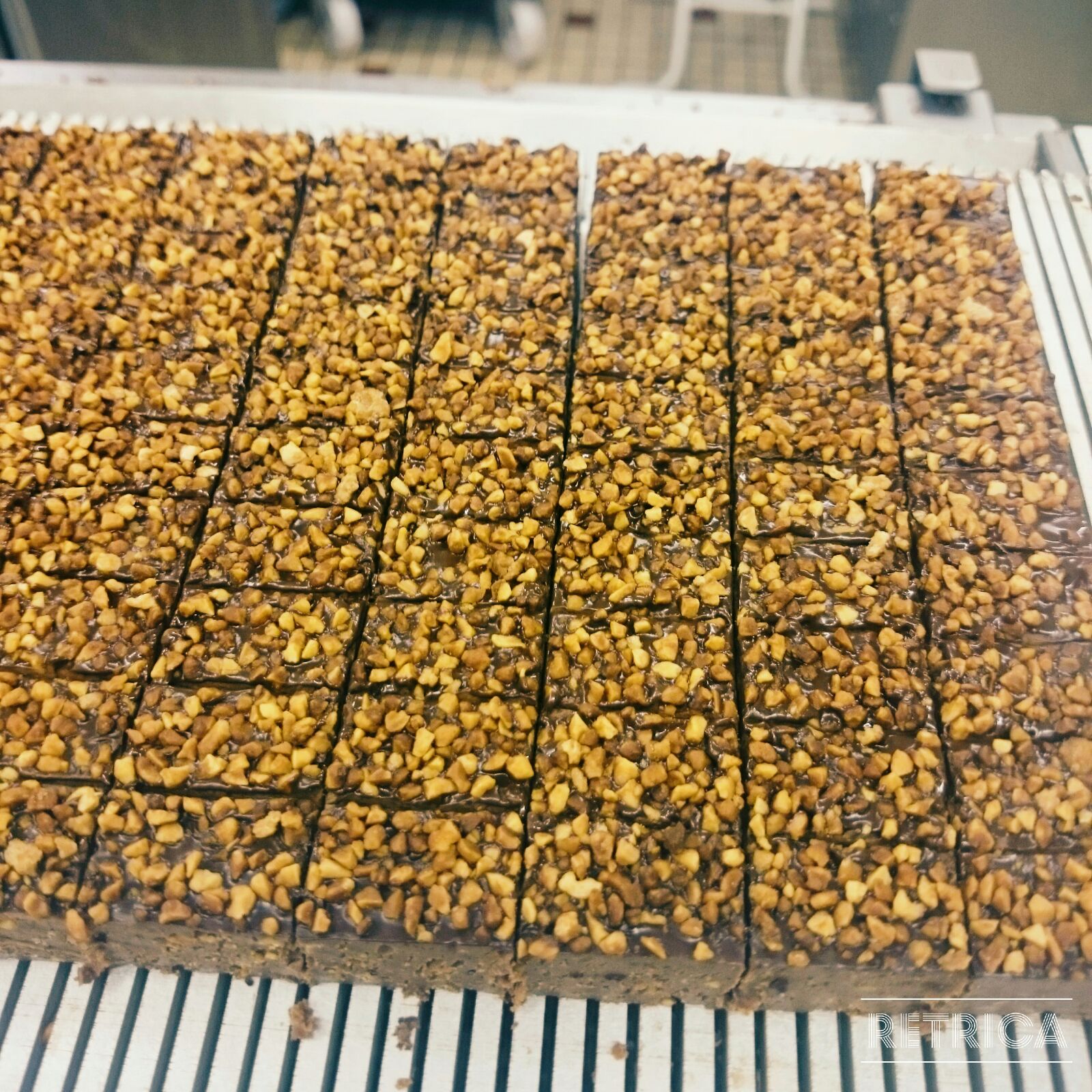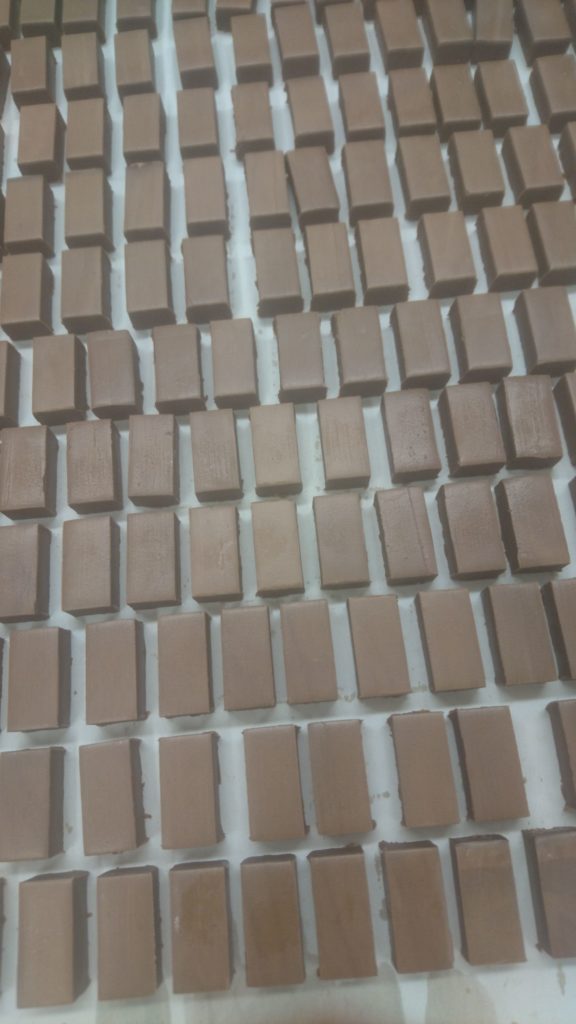How to start your chocolatier school journey?

Or Learning Professionnal Making slabbed ganache …
I what you’ll get after reading this article:
You’ll know what skills and value you need to make a slabbed chocolate ganache.
You’ll know, in short, what ingredients, equipement and tools you’ll need.
Essentially, you will discover if you are suited for the position of professional chocolatier or to get professional chocolate learning experiences !!!
What is a Chocolatier (Chocolate maker)?
A chocolatier is someone who has dedicated their life to the craft of making chocolate. They are passionate, knowledgeable artisans who dedicate time and effort to create delicious creations, from bean-to-bar to truffles and other confections. The job of a chocolatier is more than just loving the taste of cacao – it is also involves long hours onf practice. While it may be demanding work, many find that they appreciate the challenge of creating complex chocolate recipes that demand knowledge, experience, fail and attention. Chocolatiers are an indispensable part of many industries, with their creations adding the perfect touch to desserts, treats and more.
The Chocolatier is a master of transformation, turning cocoa into pure pleasure in the form of chocolate bars, candy, bonbons, and every decadent confectionery delight imaginable! It’s an art form that will tantalize your taste buds and leave you craving more.
In order to fully comprehend the material and its reactions, it is necessary to consider various conditions such as treatment, time, temperature, contact with other ingredients and equipment.
Bakers work with ingredients like flour, water, salt, and yeast, while chocolatiers handle cocoa beans, chocolate, water, sugar, fat, and of course the flavor!
The Chocolatier chef creates chocolate confectionery designed to remain fresh for a minimum of one month, or up to one year for larger companies. In contrast, pastries typically have a shorter shelf life of 30 minutes to 48 hours, with some dry and soft biscuits lasting a few additional days.
The professional chocolatier must navigate a delicate balance between ingredients, filling techniques, and confectionery formulations to meet their company’s goals.
How do you become Chocolatier? and start a chocolatier career…
There are various methods to achieve that objective.
Attending a chocolate school (ecole chocolat), catering school, or culinary school as an apprentice chocolatier is a reliable method of learning, although it can be costly and time-consuming.
– Work in a chocolate factory , chocolate shop, in artisan Chocolate industry, one of the best way to learn chocolatier skills,
-One suggestion is to read books about chocolate recipes and experiment with them, as it has been personally tried and tested. I still keep that way …
-The internet provides access to numerous videos and articles regarding the field of chocolate.
Like all craft job you’ll have to push yourself: Practice, try, fail, try again, practice again, and again, and fail again, and practice….then you’ll succeed.
Because you need experiences, you need to see how proceed this chef and that one, and an another one, to compare, to acquire, the knowledge.
Attending a chocolate school is optional, but it can enhance your skills in the field.
My chocolate way experienced:
I currently teach chocolate to professionals in France, Belgium, Luxembourg, Germany, and other locations despite not having a formal degree in the subject. I have gained expertise through hard work and extensive travel, but maintain a critical mindset and continuously question aspects such as ingredients, fat, cocoa, ganache formulation, praliné formulation, chocolate ganache recipes, chocolate candy process (aspect of chocolate making), chemistry of chocolate, and chocolate flavor, mostly, …
I do not say that is the best way. This is just my way, I’m proud of my path. I still making it 🙂
Here is my described food and chocolate experiences 😉 And my Curiculum Vitae 🙂
I believe that everyone have the ability to create their own path.
So you can choose any way to become professionnal chocolatier.
My goal here is to help you to become a better chocolatier.
What is a slabbed ganache? In short…
Slabbed ganache is a delicious treat for chocolate lovers, and it’s very popular among professional chocolatiers. The process of making slabbed ganache is precise and detailed, requiring a three-day schedule to ensure the flavor and texture turn out perfectly.
On the first day, all of the ganache must be made; then it needs to be cast or spread in frames so it can set for few hours.
On day two, the ganache is cut and pieces must be separated to allow each side to dry.
Then on day three, the ganache pieces can be enrobed in melted chocolate or decorated with other ingredients before being packaged up for sale. This step could be completed on the second day. I have experience teaching both individuals and companies within a two-day timeframe.
Making slabbed ganache at home can be tricky if you’re not familiar with the techniques necessary for accurate proportions of cream and chocolate ratio or tempering methods when enrobing finished products. Luckily, I will provide, in my online chocolate courses, an easy-to-follow recipe that includes features, process, ingredients, tips, etc. It will make it simpler for novice food crafters to follow along in order for them to get perfect results every time. With his directions, anyone can.
Start with chocolate ingredients…
The ingredients needed to make a slab ganache are as follows:
Heavy cream or Liquid cream ( with 30 to 40% fat); to know the fat content is very crucial. That will determine the ratio of cream you need.
Butter (with 82% fat minimum).
Glucose syrup, dextrose, and invert sugar are commonly used as sweeteners in ganache to achieve a soft texture and longer shelf-life.
Bittersweet chocolate, dark chocolate, black chocolate, milk chocolate, white chocolate,
Important to know are cocoa rate, sugar rate, cocoa butter rate. That
About flavors, I won’t advise any artificial flavours. They do not correspond to my value. I use only naturals ingredients and raw materials. to flavor ganache, you have own ingredients itself that parfumes the ganache, as the heavy cream, the chocolate,… also you have fruit purée, spices, confit fruits, herbs, dried raw materials,…
The Quick process of Slabbed chocolate ganache:
Here are the essentials point to make a slabbed ganache:
Heating the liquids
Pouring the liquids on the Cocoa Elements
Mixing to Emulsify
Pouring the Ganache
Crystallizing the Ganache
Precoating the ganache
Cutting the Ganache
Coating ganache filling
Find more details of making slabbed ganache process here
In my chocolate course online you will get those chocolate skills…
My chocolate online program will help you to master the start of your chocolate school journey:
How to learn basic chocolate skills to make slabbed ganache?
How to manage (slabbed) chocolate ganache at home or in a professionnal laboratory?
How to set a full range of chocolate ganache with different natural flavor?
Understanding chocolate ganache in a simple and concise manner.
Understanding the basics chemistry of chocolate making
Understanding choices and impacts of the main raw materials, on the ganache.
Understanding the main ratio of slabbed chocolate ganache.
The tips of French artisan chocolatier adapted to your needs.


